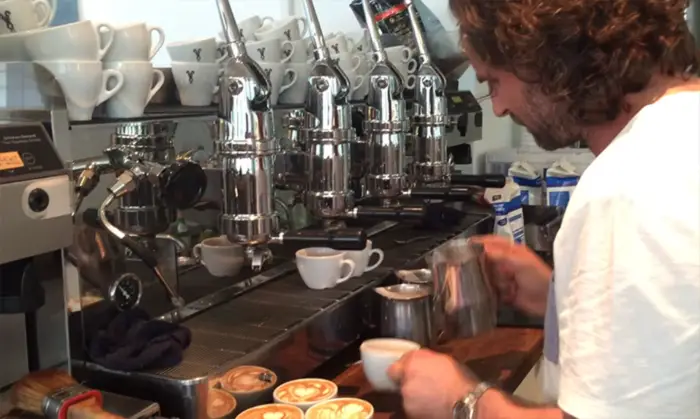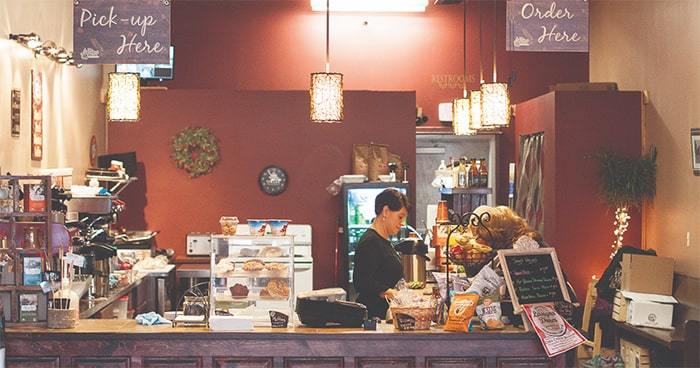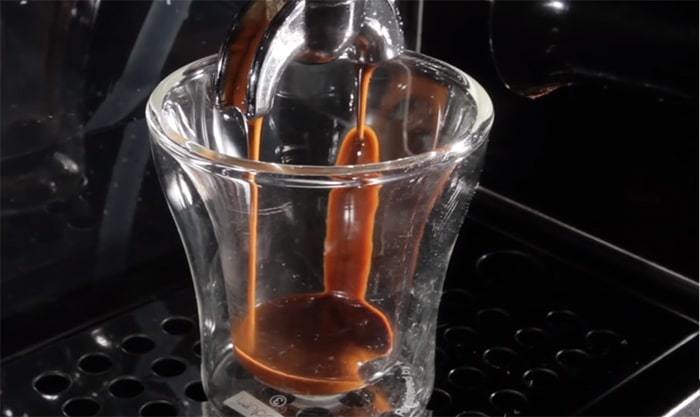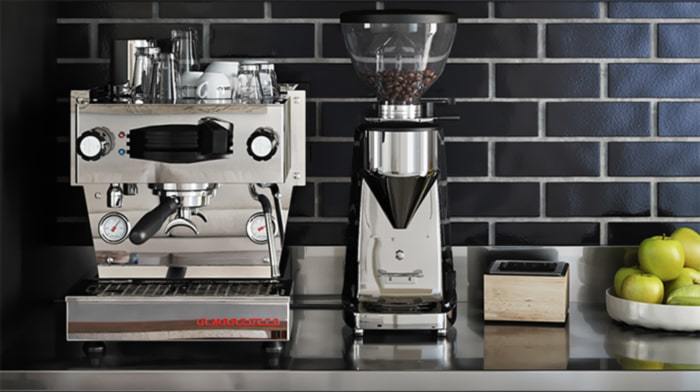So, you want to be a barista? It’s a great career choice! Baristas are the lifeblood of any coffee shop – they make the coffee that everyone loves. But how do you become a barista if you have no experience?
As a general rule, you’ll need at least some prior experience working with coffee to become a barista. This could include any prior experience as a server or bartender in a coffee shop, cafe, or restaurant. Be patient, be passionate, and be willing to put in the work and you’ll eventually get there!
It can seem daunting, but it’s quite simple. In this blog post, we will walk you through six simple steps that will help you land your dream job as a barista!
What Skills Are Required to Be a Barista?

Being a barista requires more than just the ability to make a great cup of coffee. To be successful in this career, you must have strong people skills and be able to work well under pressure.
You must be able to think on your feet and handle difficult customer requests with grace. Of course, making coffee is still a big part of the job, and so baristas must have a strong knowledge of different brewing methods and bean varieties.
They must be able to grind, tamp, and extract the perfect shot of espresso. Baristas also need to be able to make a variety of drinks, from classic espresso-based beverages to intricate cold-brew creations.
Being a barista requires a unique blend of skills, including both customer service and coffee knowledge. With the right mix of attributes, anyone can succeed in this exciting and challenging career.
So, ask yourself the following:
- Do you have an outgoing personality?
- Have you excellent customer service skills?
- Do you thrive under pressure?
- Are you polite and friendly as well as flexible?
- Do you have numeracy or maths abilities when it comes to money handling?
- Are you willing to follow health, safety, and food protocols?
Right, and assuming you have a majority of these key ingredients (as well as a passion for coffee, because, honestly who doesn’t?!), we’ll move into some barista tips for beginners.
5 Simple Steps to Help You Become a Barista
We’ve compiled a list of ten great tips to help you become the best barista you can be.
Some of these may seem obvious, but they’re all important nonetheless. So, without further ado, here are our top ten tips for becoming a barista:
Step 1: Get Smart!
Our master barista was once like you: corporate slave, earning a good chunk of change, and, well, miserable!
She decided to ‘choose herself’ by leaving the commercial life behind and starting a barista career having had no prior experience except a geeky appreciation for roasting, grinding, and making a strong cup o’ joe!
But first, and all of us at CoffeeGrindGuru.com agree, you need to know what you’re getting yourself into, which means you need to get smart first. Here’s what to expect:
- You will not immediately be “put on the bar”
- You will be placed in “BOH” until you graduate to “FOH”
- You will have to learn all menu and bar items
- You will have to start as “PT” or “seasonal”
- You will have to help with “open” and “close”
This is just a taste of industry jargon and some of the barista terminologies you will need to get smart on while you learn the basics. Quickly:
- To be “put on the bar” means that you are pulling shots (which is technically a barista’s main duty title) and leading in building, making, and serving excellent cups of coffee
- “FOH” and “BOH” stand for Front-of-House and Back-of-House, respectively, with the former being the customer-facing side of the business while the latter is where you will have to learn about the business and offerings to include recipe guides as well as ingredients for each drink
- Besides having to start as “PT” (part-time) or “seasonal” (only during busy times of the year), there are also “split-shifts” where you might have to work from 9 AM to 2 PM and then come back to “close” from 5 PM to 8 PM
- On this last bit of barista terminology, “open” means getting to the shop or standing before the customer, and, often, quite early (think 3 AM), while “close” means sticking around to tidy up and do dishes
This is not to say you can’t handle the hot, noisy, and frequently busy environment, but just be aware that a barista with no experience is just that: a barista with no experience.
Step 2: Get Real (dirty)!

So, you may very well be asking yourself, right, then how does one enter into barista training?
Answer? It’s been our experience here at CoffeeGrindGuru that you may have to get a bit dirty first.
As a bit of history (and we promise, not too much history), did you know that the word barista is Italian for bartender and literally means “barman” and “barmaid”?
This should give you some indication of what to expect when graduating from “BOH” to “FOH”: you’re still cleaning and learning.
Sure, they’ve let you work the register and write customer orders on the sides of cups, but you have quite a ways to go in order to be “put on the bar”.
It is important to note that during these dirty shifts, you must also be learning customer orders and how to express to the barista working the espresso machine what drinks to make. So, onto more terminology:
- SF is sugar free
- L is latte
- MoCoCo is mochaccino or caffe mocha
- S is skim
- A is almond milk
- H is hazelnut
- ___ is leave room for milk
- ^ is filled to the top
- +2 is for two extra shots
Now, before we move on, it’s important to note that every coffee shop, barista, and expeditor will have his or her own lingo. It is your job barman and barmaid to learn the barista terminology and use it with great attention to detail!
Step 3: Get Trained!

Alright, so you’re a quick study and ready to get started with your formal training. This is assuming you have already become an expert at the following:
- Grinding fresh beans so your barista is never without a fresh brew
- Preparing and serving drinks as they hit your “POS” (point of sale or cash register)
- Cleaning and tidying all equipment and machines as you go so there is no poor tasting coffee being handed off to customers
- Doing stock runs, stock checks, and alerting your barista to any products (like milk and ice!) that are running low
First off, and per a barista’s job title, you must learn the art of pulling a shot on a commercial espresso machine. You will need a ton of training and practice, practice, practice!
That said, you have just entered into an apprenticeship phase where a master barista will help train you and quiz you while you pull actual shots for actual drinks. Exciting, right?
Well, if you can stand up to the scrutiny. In other words, you need to make sure no shots taste acrid or sour while simultaneously ensuring that you clean out the heads of the machine, backflush when you need to, and rinse your demitasses.
Are we speaking Greek, er, Italian, again? It’s ok, here’s another barista terminology cheat sheet:
- Machine heads are where you place the ground espresso beans, using your portafilter and basket, so that extremely hot (200 degrees Fahrenheit) can pass over your grind to make the most perfect shot possible
- Portafilters and baskets are the devices with the handle that ‘carry’ the ground beans to the group or machine heads (which, again, is where that hot water meets bean in a perfect union of sharp mouthfeel and pleasant flavor)
- Backflushing is when you rinse off the machine heads and is routinely done on an every-other-day schedule so as to prevent the buildup of grounds, but to avoid too much of a clean or metallic taste
- Demitasses are those super cute shot cups that double as measuring devices so that each shot pulled is one ounce, no more, no less and
Once you have a consistent shot of espresso under your belt, then expect a handwritten quiz as well as a practical exam with the master barista before moving into the next phase of training, or: journeyman.
This stage of learning how to become a barista will see you learn to steam milk and build more complex drinks like lattes, dry capps, wet capps, and macchiatos.
Quickly, and back to some basic barista terminology:
Journeymen (and women) are skilled artisans that are able to work as fully qualified employees with a certificate or similar approval. This is in contrast to the apprentice, which is more like on-the-job training.
The final step, of course, is becoming a master craftsman or barista. This will require still more testing, which we will explore next.
Step 4: Get Tested!

In order to graduate to master craftsman-slash-barista, you will have to complete the equivalent of a master’s school with tests, tests, and more tests.
This should not put you off, of course, as you have already had to sacrifice quite a bit in terms of pay (more of that, anon) and a lot of sleep…so, what’s a written test or two?
But in order to really zip through your apprenticeship and accumulate a serious number of hours as a journeyman, it is highly recommended that you make more robust your CV by taking a few courses in hospitality, retail, customer service, and human resource management.
Oh, and don’t forget to stay up-to-date on the latest trends in the industry, especially this one if you find yourself in need of some CBD-inspired creativity. Try these on for size:
- Follow the CoffeeGrindGuru.com blog and check in regularly with your favorite baristas (us!)
- Subscribe to actual (we know) magazines, journals, and periodicals such as Caffeine or Imbibe (NOTE: you can get the e-version delivered to your phone)
- Start communicating with other baristas in a professional manner and grow your network on LinkedIn.com or Indeed.com (since you never know when you may need to, or want to, change locales)
Step 5: Get Experience!

Now, if you are anything like our corporate-escapee-turned-coffee-vigilante, then you may be hurting a bit when it comes to income, insurance, and the like.
She was lucky enough to have socked a bit away before telling the man to, er, well, you know…
But there are plenty more barista tips for beginners making the move into this industry. Think about these great tips before you walk away from the cube farm:
Tip 1: Get Some Experience First by Moonlighting.
What we mean is go to your local coffee shop and ask if they need help and that you would be willing to pitch in (for free) a few nights or weekends every week. This way you do not have to cut the cord with corporate until you are earning a little bit on the side.
Tip 2: Take Online Courses and Get A Certification.
Not all classes are free, but a great many can be and they will allow you to get up to speed faster once you take the leap.
Tip 3: Learn All About Coffee and Engage with Your Local Barista.
to see what is new when it comes to machines, espresso, equipment care, and day-to-day operations in a coffee shop.
Tip 4: Memorize the Four Factors that Can Help You Consistently Pull Shots.
Know the blend and freshness of the coffee
Understand grind time and coarseness so that a shot is pulled in less than 30 seconds once “on the bar”
Make sure the temperature of the water is near that 200-degree Fahrenheit mark (and no less than 194 degrees Fahrenheit)
Understand how to keep all the equipment clean and functional
Tip 5: Know All the Little “extras” that Happen Inside a Coffee Shop.
(e.g., keep all the cups warm, do not stack glasses, learn how to move quickly and safely, etc.)
Tip 6: Learn the International Standard for Espresso Extraction
- Grind seven grams of espresso-bean coffee
- Tamp the grinds (but do not spin the handle as you could create channeling)
- Brew through the head at 194 degrees Fahrenheit (minimum) at 9 BAR per square inch (approximately 131 pounds per square inch)
- Pull the shot in under 30 seconds, with 25 being ideal
- Extract one shot in your demitasse (or two, depending on the morning!)
Tip 7: Make Sure You Know What a Good Crema Looks Like
and that it is moderately red in color with just a few bubbles

Tip 8: Learn to Steam Milk Correctly
more froth, less liquid) and lattes (less froth, more liquid)
NOTE: This will come with time, experience, and practice since every type of milk will have various kinds of characteristics with whole milk being the easiest to froth and steam with almond or nut-based alternatives being quite difficult given the amount of water already in the product
NOTE: unlike your favorite 5-bucks chain, do not listen for a “squeal” (this is not a butcher shop), but, instead, look for a nice circular wave
Tip 9: Ask Questions!
This might seem obvious, but when you are a beginner and trying to keep up all whilst making a good impression, well, you might be afraid of sounding dumb. Try some of these to break the ice:
- What can I do to help make the line move faster?
- How can I help with stocking?
- What can I do to make your job easier?
- Can I prep the frozen drinks?
- Should I grind more beans?
These are only a few barista tips for beginners, but the list could certainly go on and on. The bottom-line, of course, and as is the case with all jobs, is to be proactive, eager, and hungry to learn!
Tip 10: Get Apprentices (Pay It Forward and Back)

As is often the case with retail, restaurants, and other service-based enterprises, there will come a day when you are no longer the ‘newbie’ or ‘noob’ and a brand-new batch of would-be baristas walks through the door.
That said, our second to the last step in how to become a full-blow barista is to remember where you came from and to pay it forward and back!
What’s that mean?
Well, it’s easy: take one of these little baby birds under your wing and teach them your preferred methods as well as tips or tricks of the trade. Get them fast-tracked on learning how to become a barista as well as into barista training and certification classes.
What’s more? Take some certification courses with them and show that you are never ‘too old or ‘too seasoned’ to learn. Here are some possible barista certification classes to further pad your resume and CV while helping out one (or two) of your baby birds:
- Private barista training at your local bespoke shop (e.g., nitro-only shops, etc.)
- Sensory classes on learning how to taste coffee
- Filter brewing master classes for home-based use
- Go to a training lab and request different types of brewing so you can learn the different textures side-by-side
- Ask to tour your local roasters and ‘get smart’ (again) on where your beans come from and how to keep them poppin’ fresh
- Learn about sourcing coffee and green coffee, which is quite popular at the moment
- Latte art courses will be of use in the next phase of your training (see bonus edition below)
Another consideration might be that while not all courses are free or ‘cheap’, you do get what you pay for, so, we here at CoffeeGrindGuru.com recommend looking into any of the courses run by the Specialty Coffee Association or the Beverage Service Association.
Many of these certifications also offer deep discounts should you bring a ‘friend’ (or ‘noob’) with you!
Bonus Tip: Get Your Game On! (Compete)

Now’s your moment. You’ve completed all of the requisite training. You have been an apprentice, journeyman (or woman), and now not only a master but also a resourceful teacher. So, what’s next?

Not ready to open your own shop, but wanting to do something to stretch yourself or build out that experience?
Why not enter a barista competition?
There are a number around the world as well as an actual championship series, but should you not want to elevate your game that high perhaps we could recommend to you the following:
- Put on a local event in your area where different shops compete with all donations going to a charity
- Partner with a similar business or craft brewery and have a recurring monthly event where your team supports their squad with a taste-off or tasting competition between brews and, say, craft beer
- Run in-house, after-work events to see who has the best latte art and if you can learn any new tips or tricks when it comes to perfecting your own craft
Key Considerations
As previously mentioned, and while the good folks at CoffeeGrindGuru.com know what it’s like to be a slave to the man, we would not want you to just up and quit to become a barista.
It’s always important to remember that anything you do 40-plus hours a week is going to be ‘work’; that said, we love what we do and encourage you to (eventually) follow your dreams.
This will certainly be harder if you have a family or are caring for a parent or sibling, especially since the pay ain’t that great to start. Here’s what to expect:
- Barista in training (or BOH) with no experience will be on the hourly minimum wage, which will vary from state to state and country to country
- Barista as an apprentice will average about $15K (per year!)
- Barista in journeyman (or woman) status could see up to $20K (per year!)
- Barista as a master in the trade will be $30K (per year!)
Of course life, and a good cup o’ joe, is not all about the money, but just make sure that you know why you want to become a barista since we’ve effectively provided you with ‘the how’.
One interesting point to note is that this skill is certainly one that travels well. In other words, once you know how to pull a shot consistently, then you are free to move about the country (or world)!
If you have a bit of wanderlust (like our very own barista), then consider working at a hotel or on a cruise ship since there is often an opportunity for greater advancement behind the bar as well as the ability to see the world or work in a location with a far ‘cheaper’ cost of living.
Just food (or drink) for thought!
Become a Barista at Home and Then Go Big!

While it is never our intention to scare you off of pursuing your dream of becoming a bonafide barista, we certainly want to make sure you are well informed on what it takes to become a master craftsman (or woman) and that it is not all glamour and green beans.
Therefore, and as a sort of call-to-action, we would highly encourage the corporate escapee to try their hand (literally) at pulling shots at home and moonlighting at the local café on the side in order to know for certain if this is the next best career move.
There are other ways to add value to the coffee industry without becoming a barista, so, could include leveraging your skills from the cube farm by consulting in human resources or finance capacity by helping out the new coffee shop owner start their business or scale. Additionally, if you are handy, then you could offer to help roast for free (or for free beans!) and drive or deliver whole beans to the good folks in your area.
The sky is truly the limit when it comes to the coffee supply chain and we encourage you to explore it since not everyone will be happiest behind the bar or in BOH.
FAQ
Final Thoughts
While there are many ways to become a barista, the best way to do it is by starting at the bottom and working your way up. This will allow you to learn all aspects of the trade and make connections with people in the industry.
If you are ready to go for your barista interview but not sure what to wear or how to present yourself, don’t worry! We have created a list of tips to help you look and feel your best.

